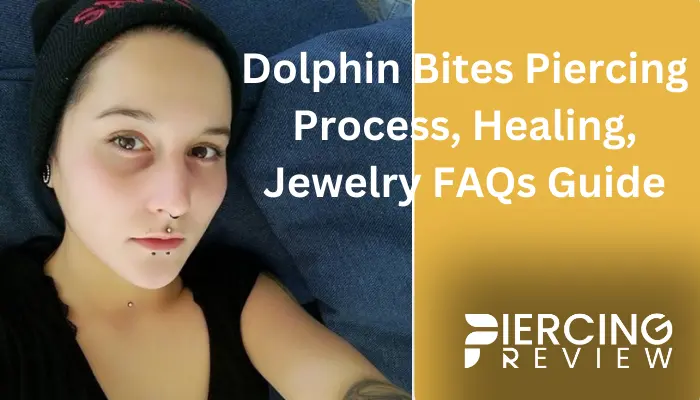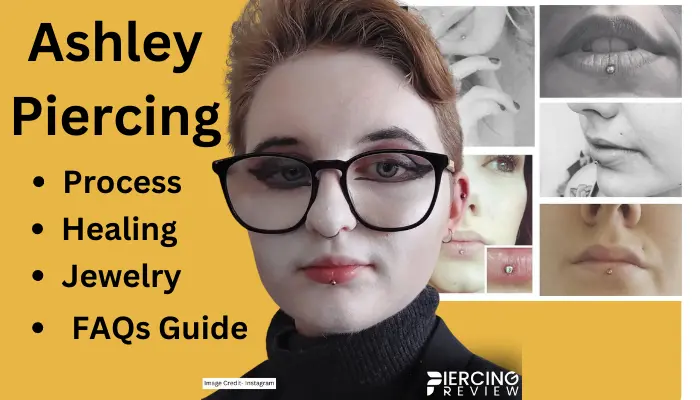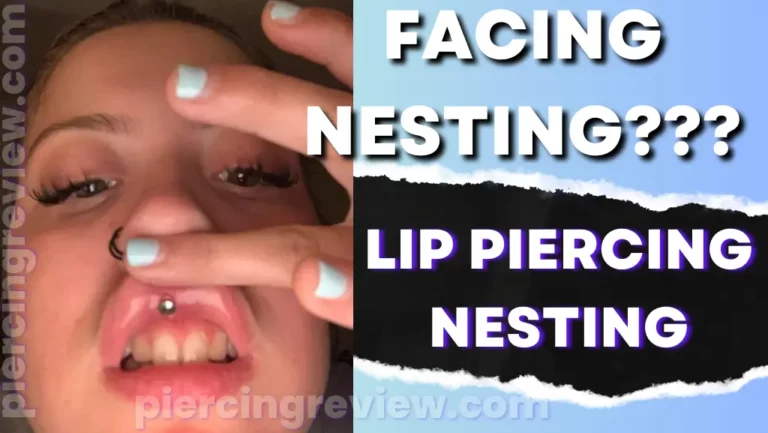Jestrum Vertical Philtrum Piercing: A Complete Guide
Want to spice up your look with a bold new piercing?
Check out our article on the Vertical Medusa (Jestrum) Piercing! Discover how this unique facial piercing can enhance your features and add an edgy statement to your style.
Whether you’re a piercing enthusiast or simply looking to try something new, the Jestrum (vertical philtrum) piercing is a daring and distinctive choice that’s sure to turn heads.
Ready to take the plunge? Read our article now and get inspired to try the vertical philtrum piercing for yourself!

Vertical philtrum piercing or Medusa (Jestrum) Piercing
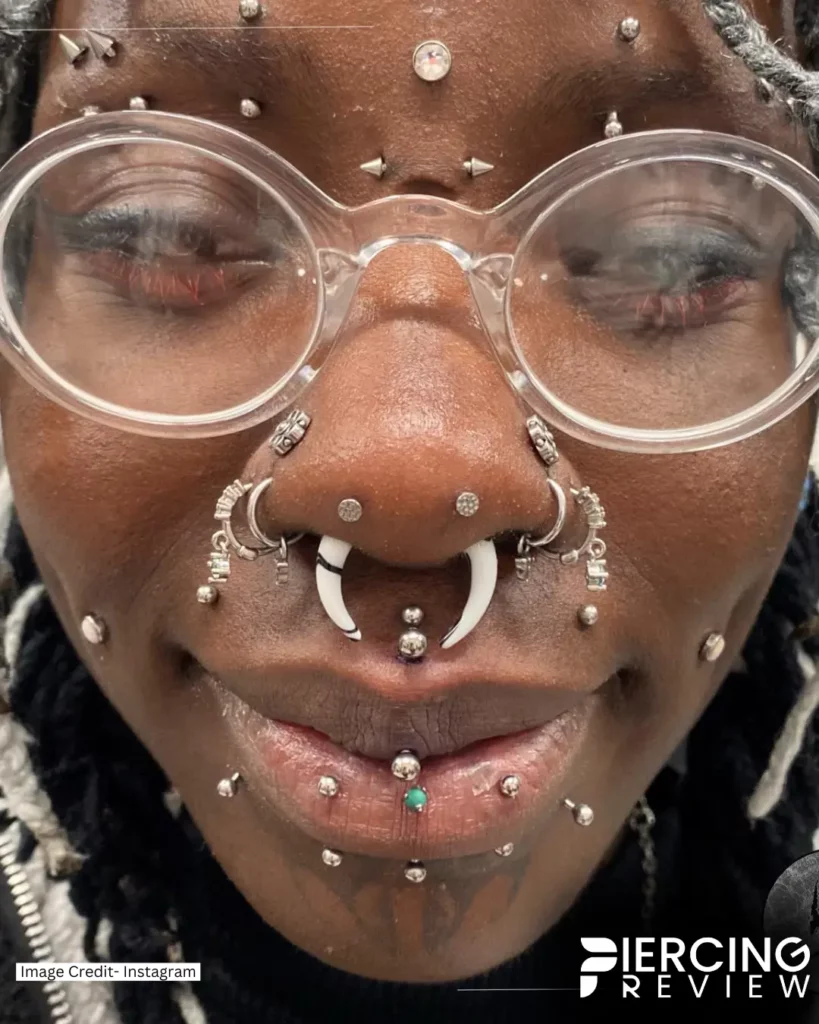
As a body modification enthusiast, I’m always excited to share my knowledge and experiences with others. Upper lip piercings have gained popularity in recent years, and with so many types available, it’s essential to understand the pierced area and what each piercing entails.
In this article, we’ll discuss Medusa, Vertical Medusa (Jestrum), and Monroe piercings, focusing on the Vertical Medusa, or Jestrum, as our main topic.
What is a Vertical Medusa Piercing?

A vertical medusa piercing, also known as Jestrum or vertical philtrum piercing, is a unique type of piercing that goes vertically through the center of the cupid’s bow of the upper lip, exiting into the vermillion pink border of the lip.
This piercing is distinct from traditional philtrum and medusa piercings, offering several advantages.
Conclusive Pros and Cons of Vertical Medusa Piercing
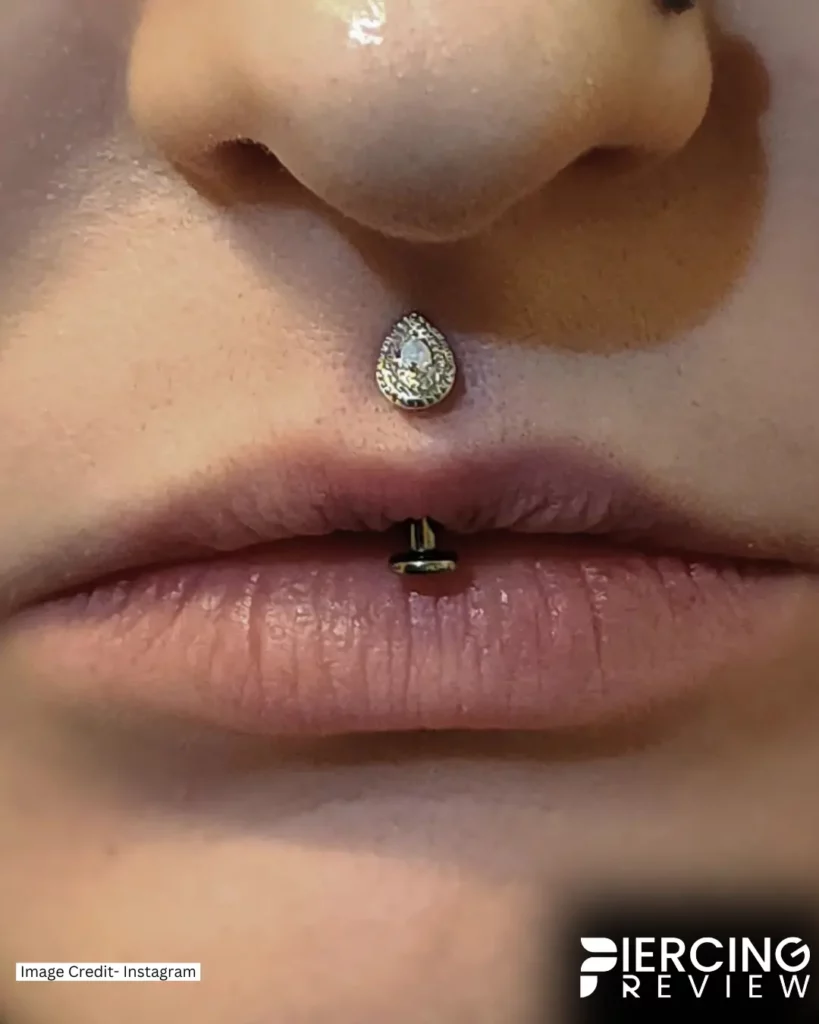
A Jestrum Vertical Philtrum Piercing, also known as a vertical medusa piercing, can be an eye-catching and unique addition to your look. Before committing to this type of piercing, it’s essential to weigh the pros and cons.
Here, I present a comprehensive list of the advantages and disadvantages of getting a Jestrum Vertical Philtrum Piercing.
PROS
CONS
.
By considering these pros and cons, you can make an informed decision about whether a Jestrum Vertical Philtrum Piercing is the right choice for you.
Should You Get a Jestrum Piercing?
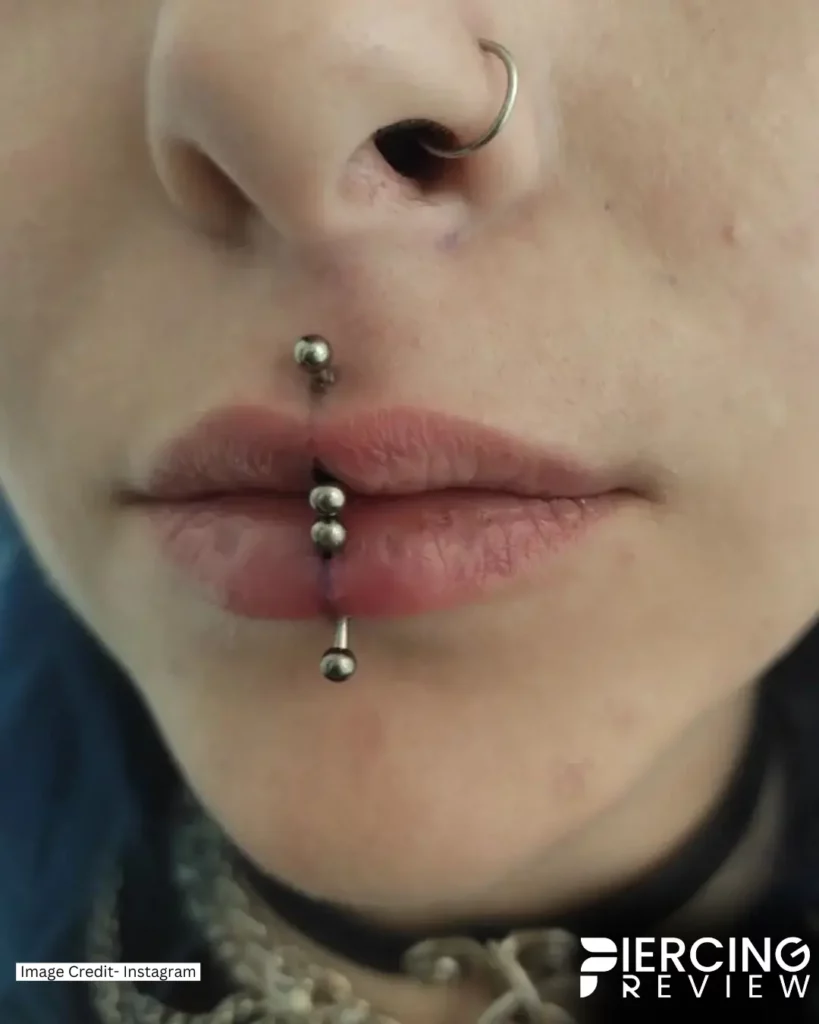
Before deciding to get a Jestrum piercing, it’s crucial to consider the following factors:
- Your anatomy: Ensure you have the correct anatomy for this piercing, including enough piercable tissue in the upper lip.
- Oral hygiene: Maintaining good oral hygiene is essential to prevent complications during the healing process. [1]
- Pain tolerance: While pain varies from person to person, upper lip piercings can be more painful due to nerve endings in the area. [2]
- Commitment to aftercare: Jestrum piercings require diligent aftercare, as they are more challenging to heal than traditional philtrum piercings.
Jestrum Piercing Placement
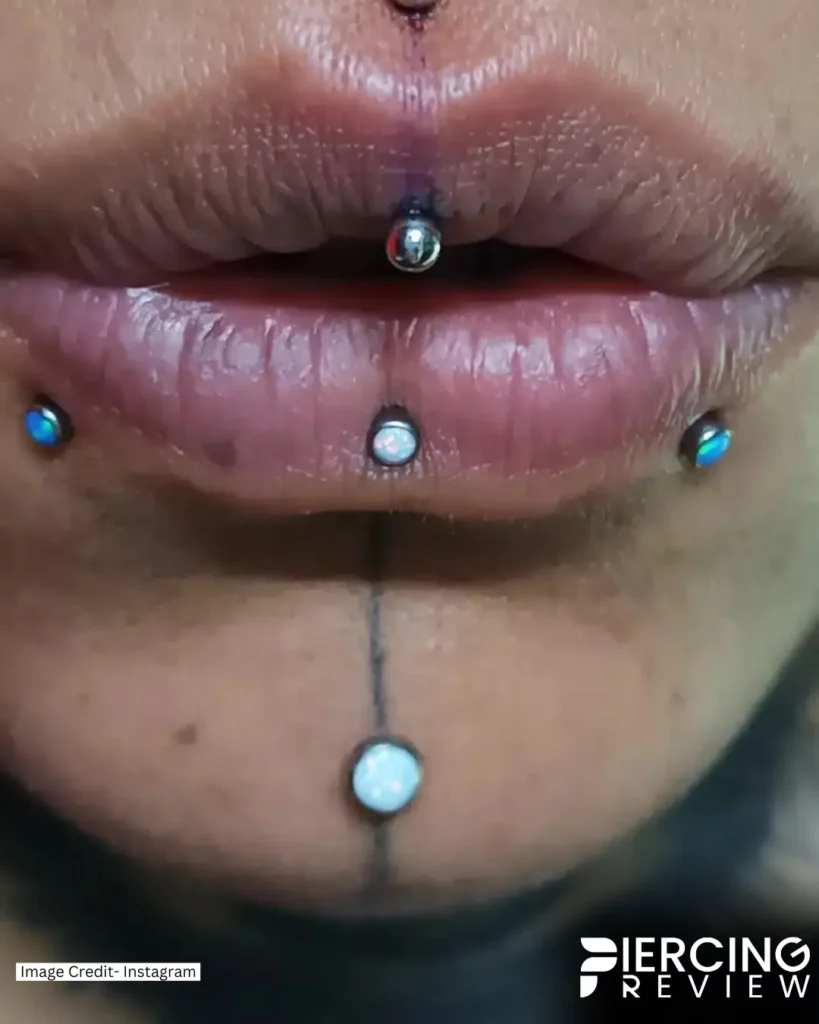
The correct placement of a Jestrum piercing is crucial to minimize the risk of tooth and gum damage. A professional piercer should carefully assess your anatomy, considering factors such as your lower teeth’ position and your biting habits.
How Much Do Jestrum Vertical Philtrum Piercings Hurt?
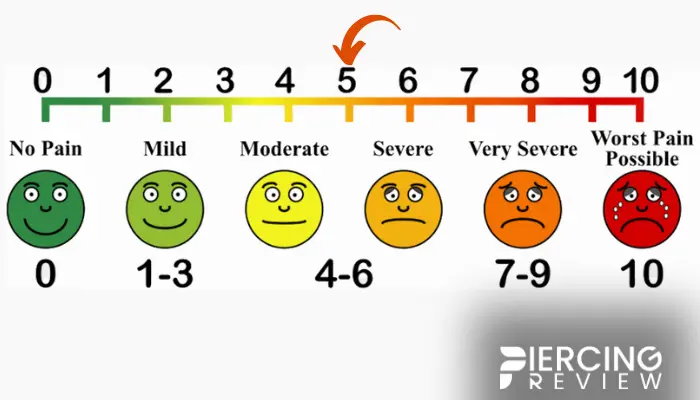
Jestrum piercings are rated 4-5 out of 10 on the pain scale due to the thickness of tissue in the upper lip and below the septum. While they are generally considered a painful type of piercing, individual pain tolerance can vary.
| Pain Level | Description |
|---|---|
| 1 | Barely noticeable pain |
| 2 | Mild discomfort |
| 3 | Moderate pain |
| 4 | Uncomfortable pain |
| 5 | Jestrum Vertical Philtrum Piercing – noticeable discomfort |
| 6 | Significant pain |
| 7 | Intense pain |
| 8 | Severe pain |
| 9 | Almost unbearable pain |
| 10 | Unbearable pain, worst imaginable pain |

Pain is a subjective experience, and everyone’s pain tolerance is unique to them. However, the upper lip area contains numerous nerve endings, which can make Jestrum piercings more painful than other lip piercings. As a result, it’s essential to be prepared for some level of discomfort during the piercing procedure.
Jestrum Piercing Healing Process
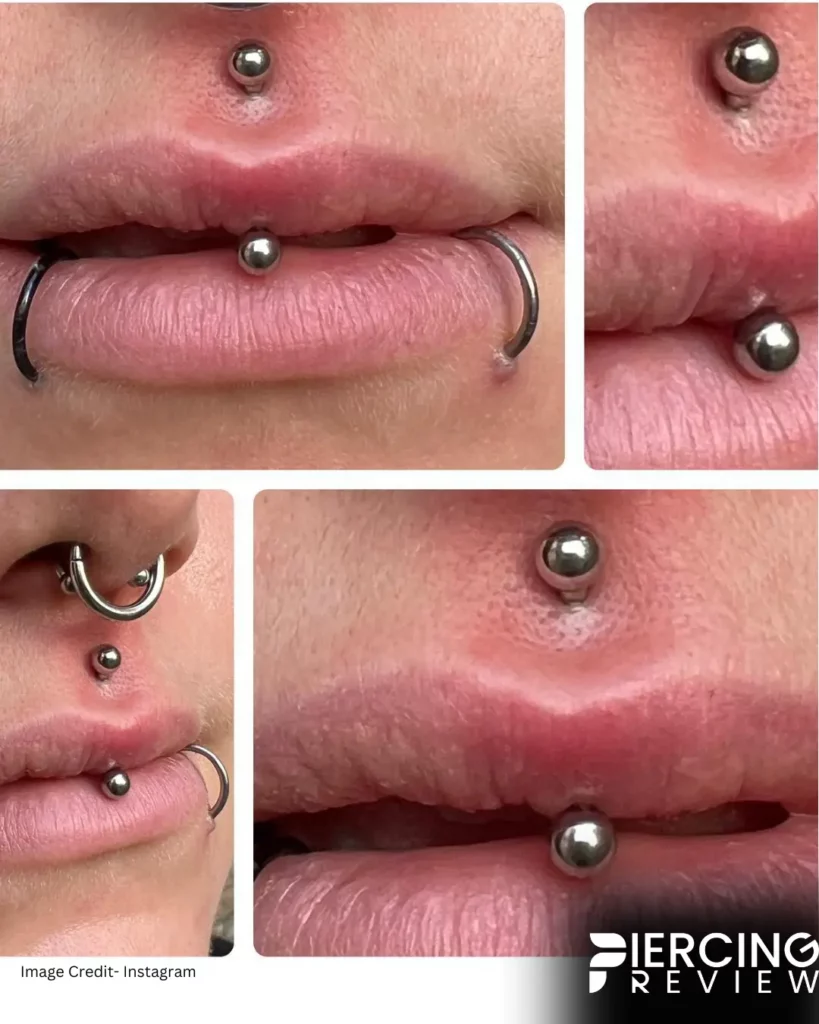
The healing process for Jestrum piercings can be more extended and challenging than traditional philtrum piercings. Swelling is common and can be quite significant initially, but it will gradually subside. Multiple downsizes may be necessary during the healing process, and diligent aftercare is crucial to ensure proper healing.
Jestrum Piercing Risks
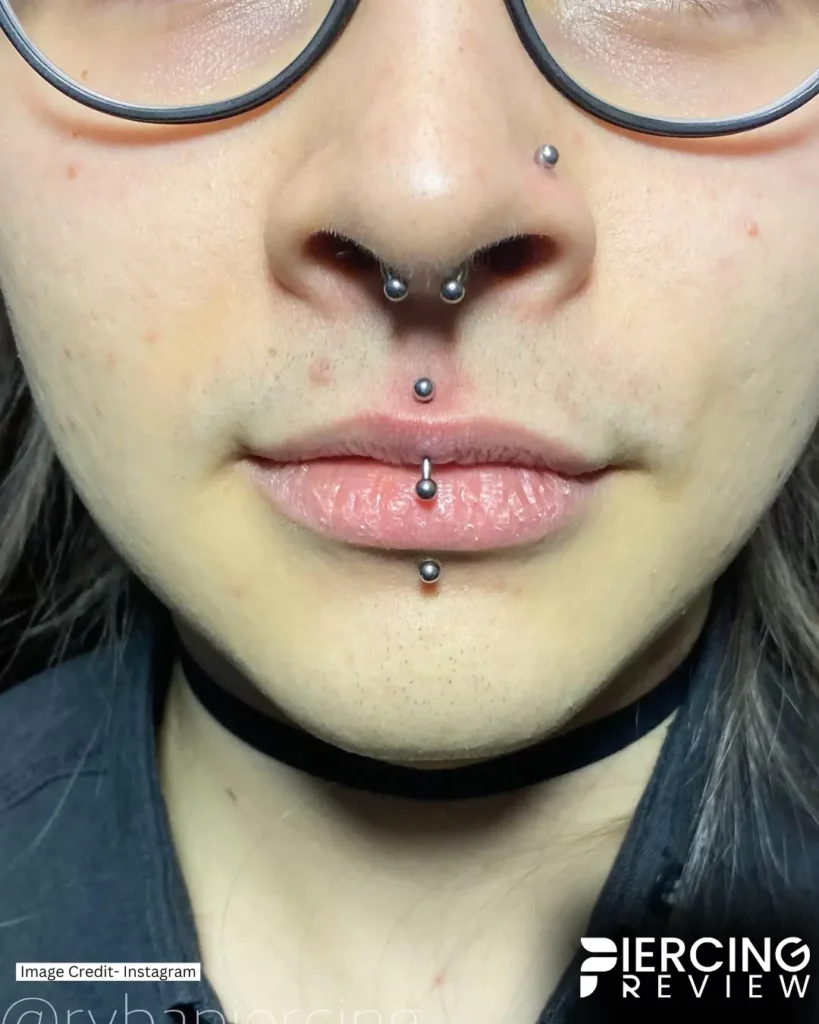
As with any piercing, there are risks associated with Jestrum piercings. Some potential risks include infection, rejection, and complications related to improper aftercare. Choosing a reputable piercer and following their aftercare instructions can minimize these risks.
Recommended Aftercare Products
- Alcohol-free mouthwash: Gentle on the healing piercing.
- Saline solution: Helps cleanse the pierced area without causing irritation.
Aftercare Rules and 5 Tips
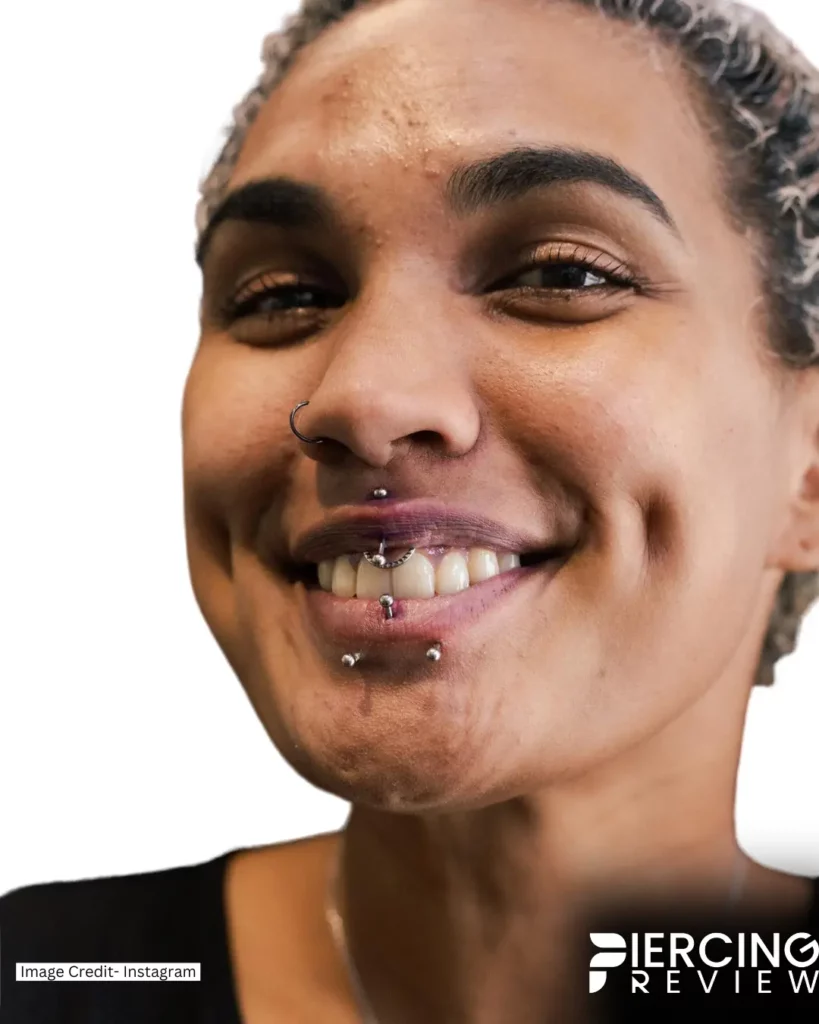
- Keep the piercing clean and avoid touching it with dirty hands.
- Rinse your mouth with alcohol-free mouthwash or warm water after eating or drinking.
- Clean the piercing with a saline solution twice daily.
- Avoid makeup, lipstick, and chapstick around the piercing during the healing process.
- Stay well-hydrated to combat chapped lips during healing.
- Avoid spicy foods and alcohol, which can cause irritation.
- Refrain from using whitening toothpaste and products until the piercing is fully healed.
What to Avoid During Healing
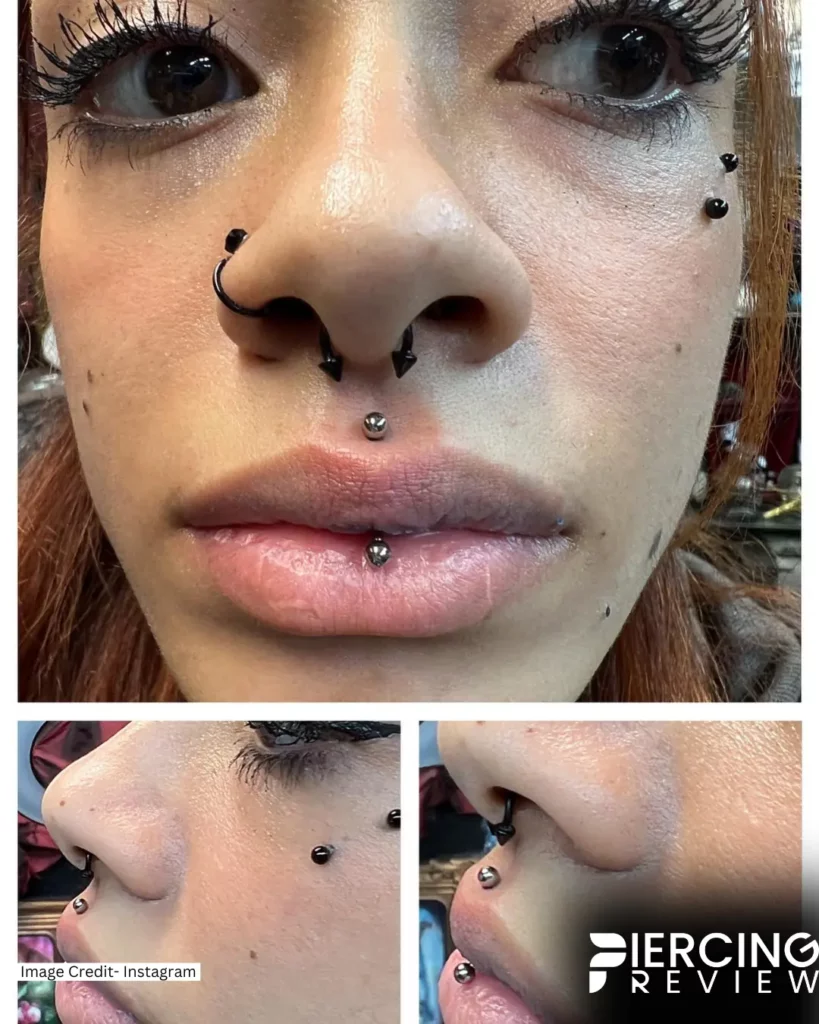
- Oral contact, including kissing and oral sex, prevents the introduction of bacteria to the pierced area.
- Swimming in pools, hot tubs, or other bodies of water, can introduce bacteria and irritate the piercing.
- Smoking, as it can slow down the healing process and increase the risk of infection.
How Much Do Jestrum Piercings Cost?
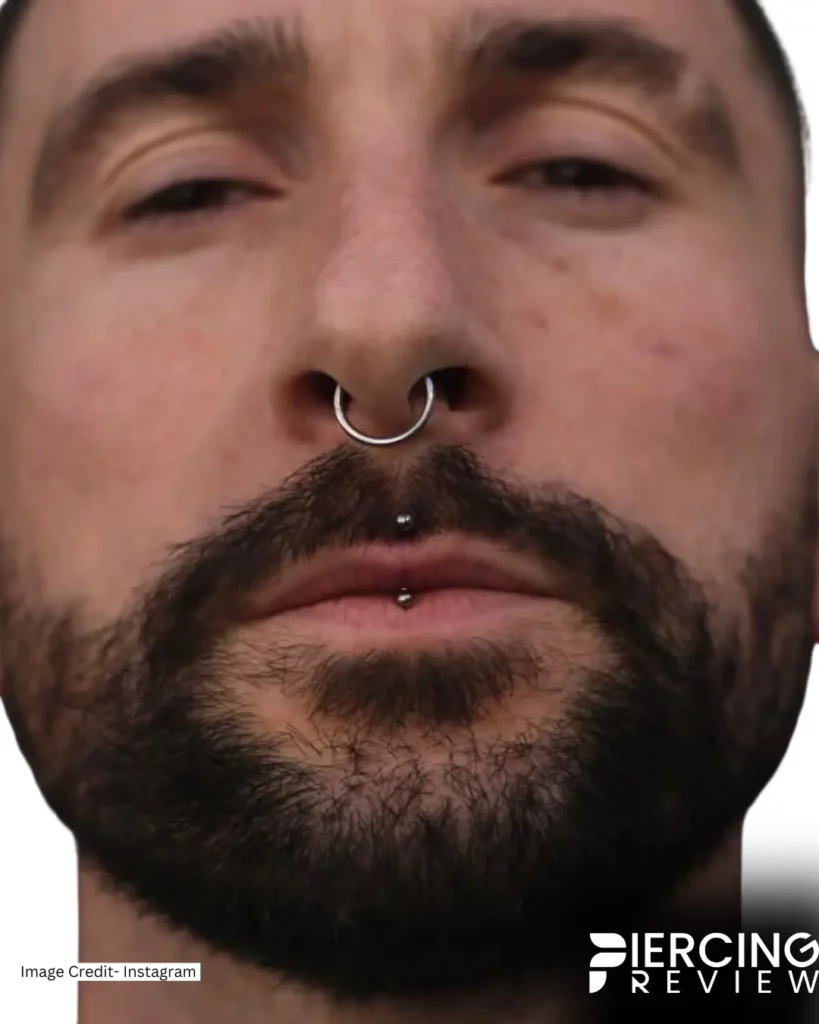
The cost of Jestrum piercings can vary depending on your location, the piercer’s experience, and the jewelry you choose. Expect to pay anywhere between $40 and $100 for the piercing, not including the cost of the jewelry.
Jestrum Vertical Philtrum Piercing Do and Don’t
Jestrum Piercing Jewelry Styles
There is a wide range of jewelry options available for Jestrum piercings. From subtle gems to bold statement pieces, there’s something to suit everyone’s style. Popular options include curved barbells, studs, and decorative beads. Remember that the jewelry should be made of high-quality materials such as titanium to minimize the risk of complications during the healing process.
Why Shouldn’t I Get A Jestrum Piercing?
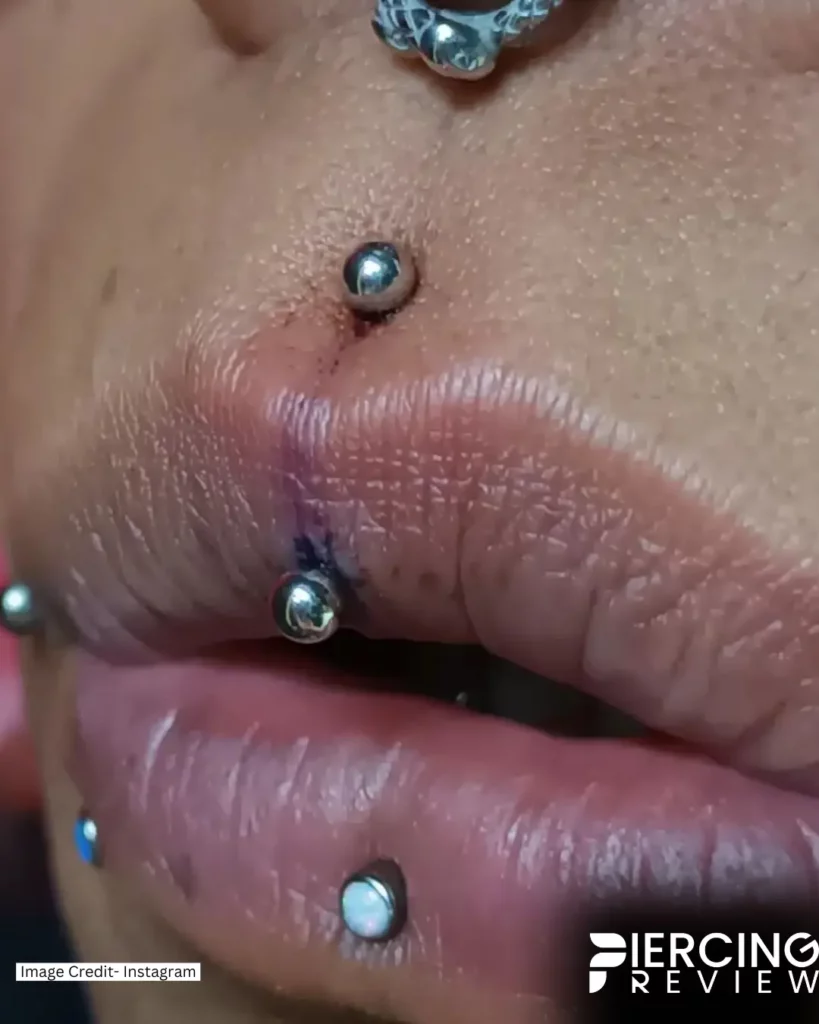
A Jestrum piercing may not be suitable for everyone. If you have certain oral health issues, previous scarring, or incompatible anatomy, a Jestrum piercing may not be the best choice for you. Consult with a professional piercer to determine if this piercing is appropriate for your specific circumstances.
Jestrum Piercing Experiences
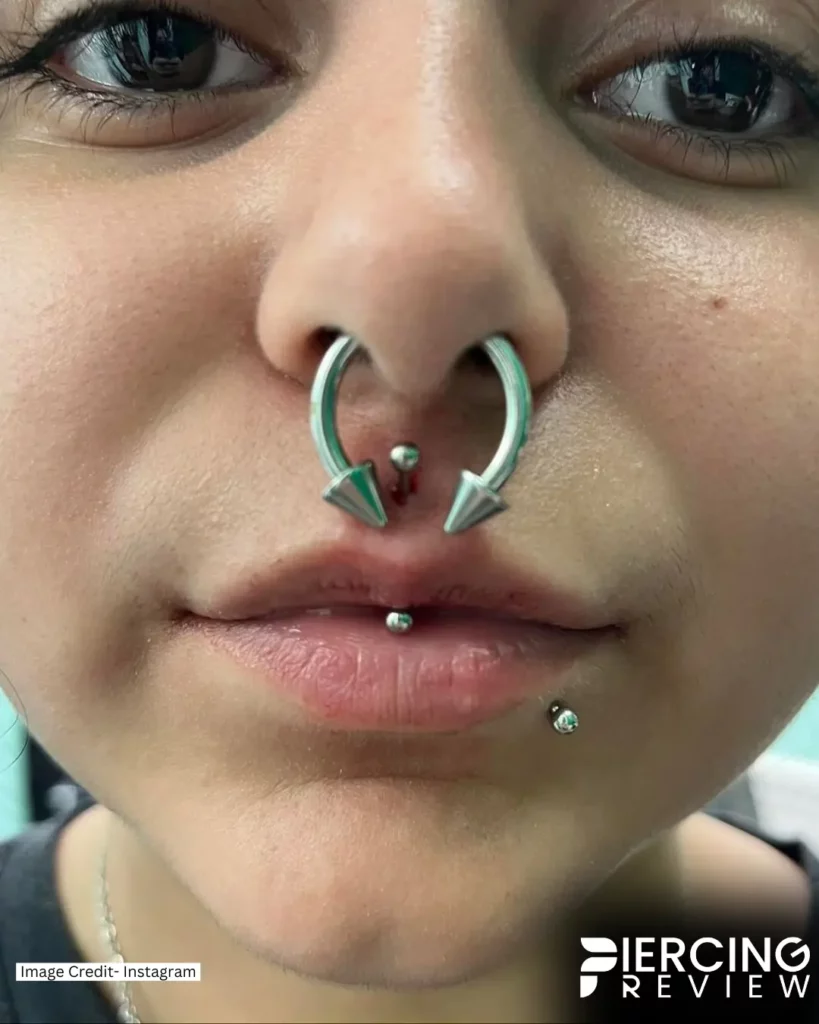
Everyone’s experience with Jestrum piercings will be unique, but most people who have undergone the procedure report satisfaction with the results. Some may experience more pain and swelling than others, but with proper aftercare and patience, the healing process should go smoothly.
Below, you will find some other types of philtrum piercings that people are also getting nowadays.
Vertical Labret, Philtrum, and Two Lip Piercings:
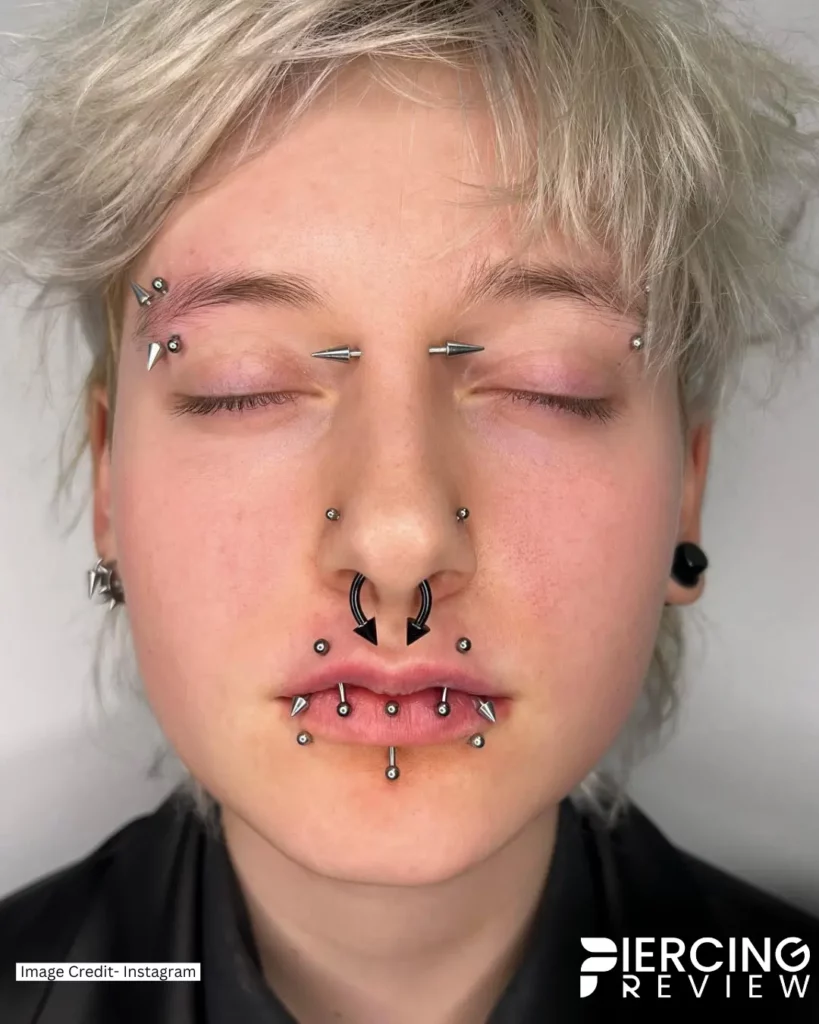
If you’re looking to make a statement with your facial piercings, you might consider a combination of a vertical labret, philtrum, and two lip piercings. The vertical labret piercing involves a single stud or ring in the center of the lower lip, while the philtrum piercing passes through the small indentation just below the septum of the nose. Two lip piercings can be placed symmetrically on either side of the lower lip, adding balance and a touch of edge to your look.
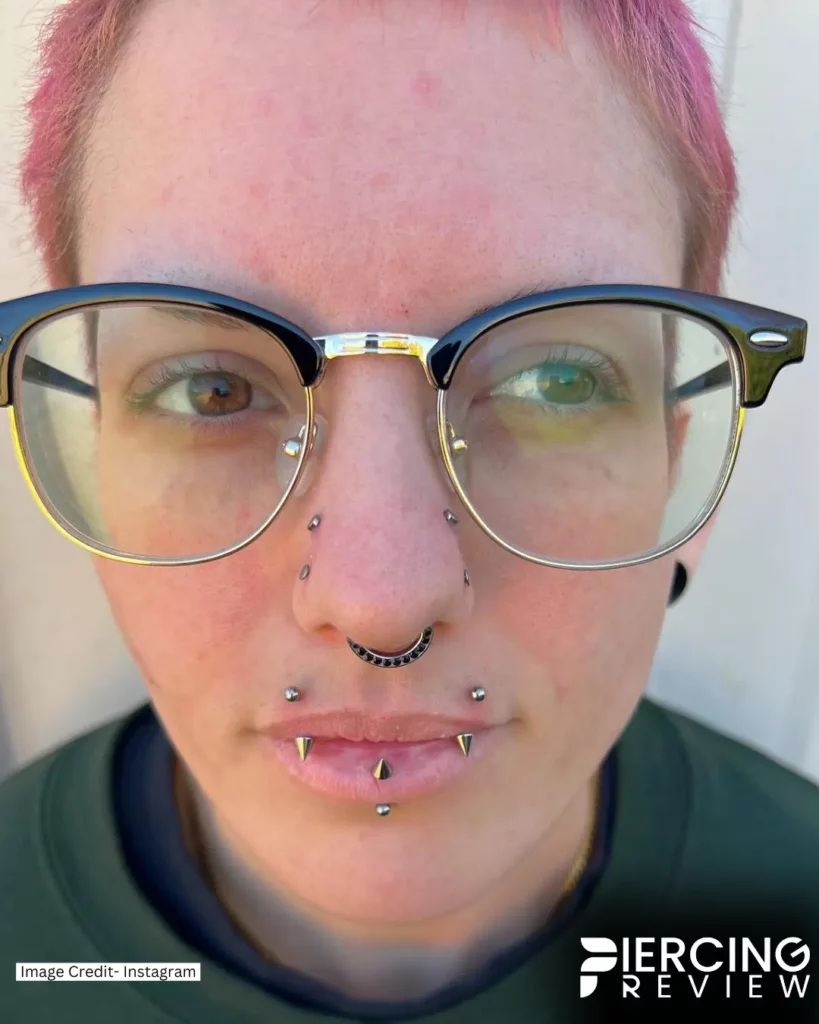
When combining these piercings, it’s important to consider the overall aesthetic and how they will complement each other. For example, a vertical labret and two lip piercings can create a bold, symmetrical look, while a philtrum piercing can add a unique focal point to the center of the face.
Pros:
- A combination of piercings can create a unique and personalized look.
- Multiple piercings can enhance and complement each other.
- Can create balance and symmetry on the face.
Cons:
- Can be more painful and take longer to heal than a single piercing.
- Multiple piercings can be more expensive.
- May require more maintenance and aftercare to prevent infection and promote healing.
Vertical versus Horizontal Philtrum Piercing:
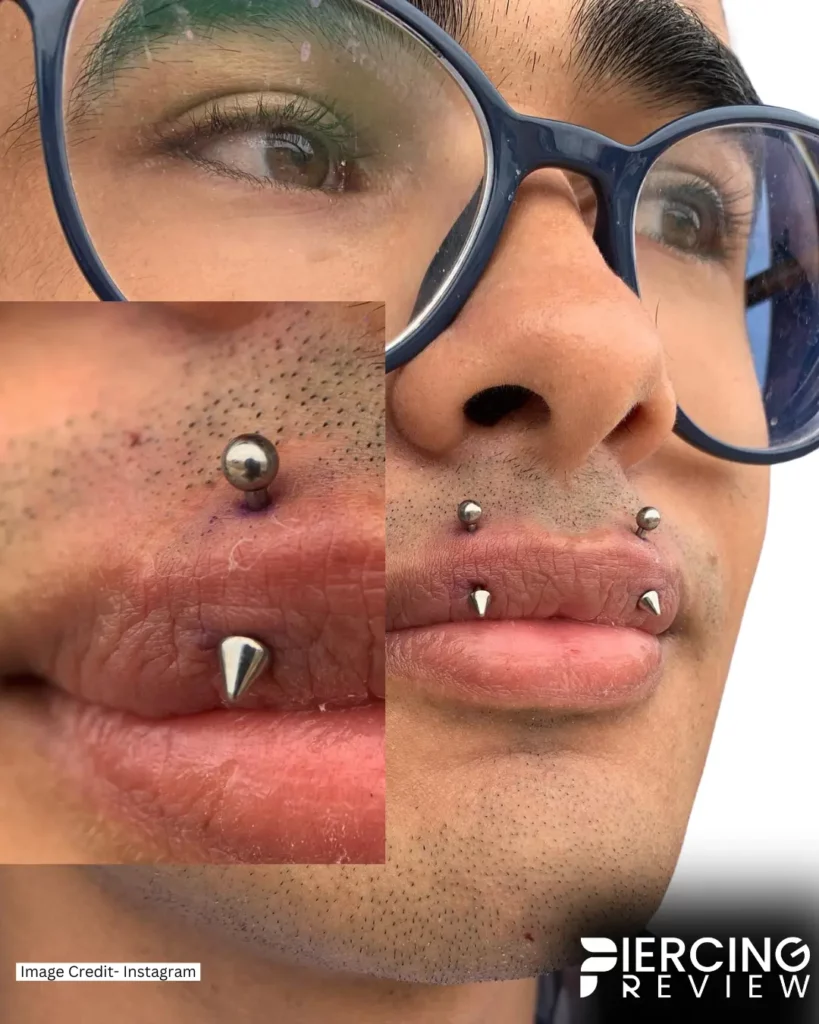
When it comes to philtrum piercings, there are two main types: vertical and horizontal. As their names suggest, a vertical philtrum piercing passes through the philtrum vertically, while a horizontal philtrum piercing passes through it horizontally.
While both types of piercings can look striking and unique, there are some key differences to consider. A vertical philtrum piercing tends to be more common and can enhance the natural contours of the face, while a horizontal philtrum piercing can create a more dramatic look that draws attention to the center of the face.
Ultimately, the decision between a vertical or horizontal philtrum piercing will depend on personal preference and the overall look you’re trying to achieve. Be sure to work with a reputable piercer who can help guide you in making the right decision for your style.
Pros:
- Both vertical and horizontal philtrum piercings can create a unique and striking look.
- Can enhance and draw attention to the natural contours of the face.
Cons:
- Horizontal philtrum piercings may be more prone to migration and rejection.
- Vertical philtrum piercings can be more painful due to the thickness of the tissue.
- Both types of piercings require proper aftercare to prevent infection and promote healing.
Pros and Cons of Double Vertical Philtrum Piercing:
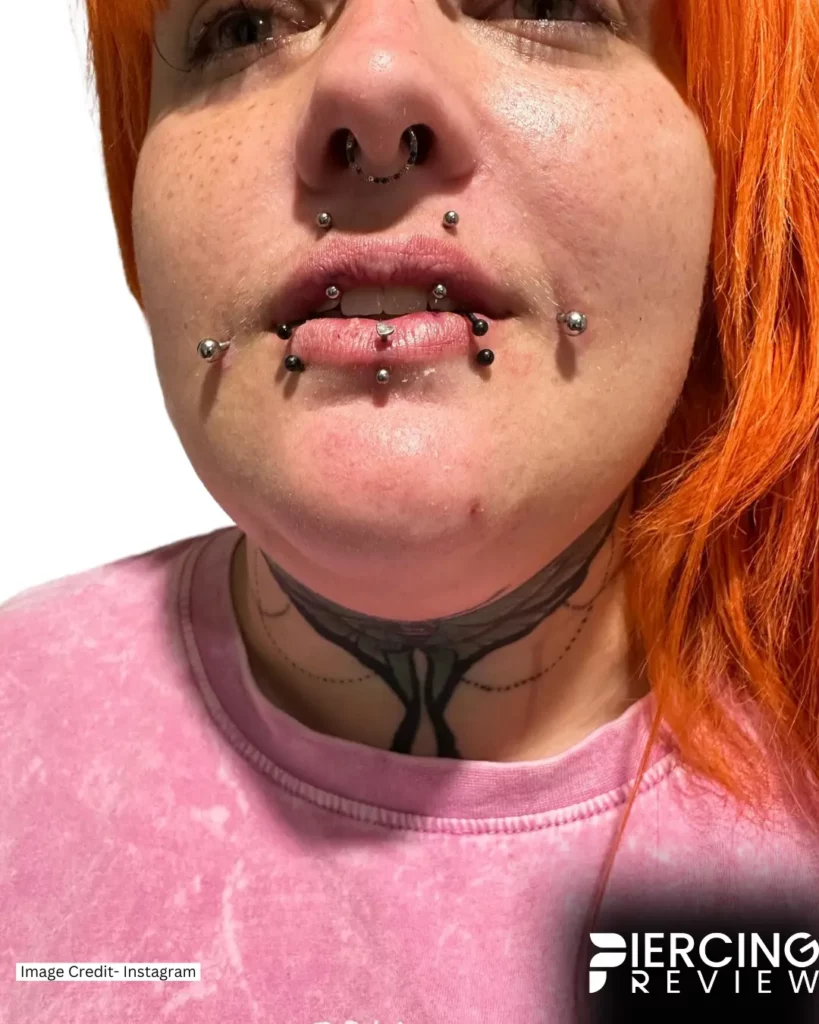
For those who want to take their philtrum piercing to the next level, a double vertical philtrum piercing can be a daring and unique choice. This piercing involves two separate piercings on the philtrum, with a piece of jewelry passing vertically through both.
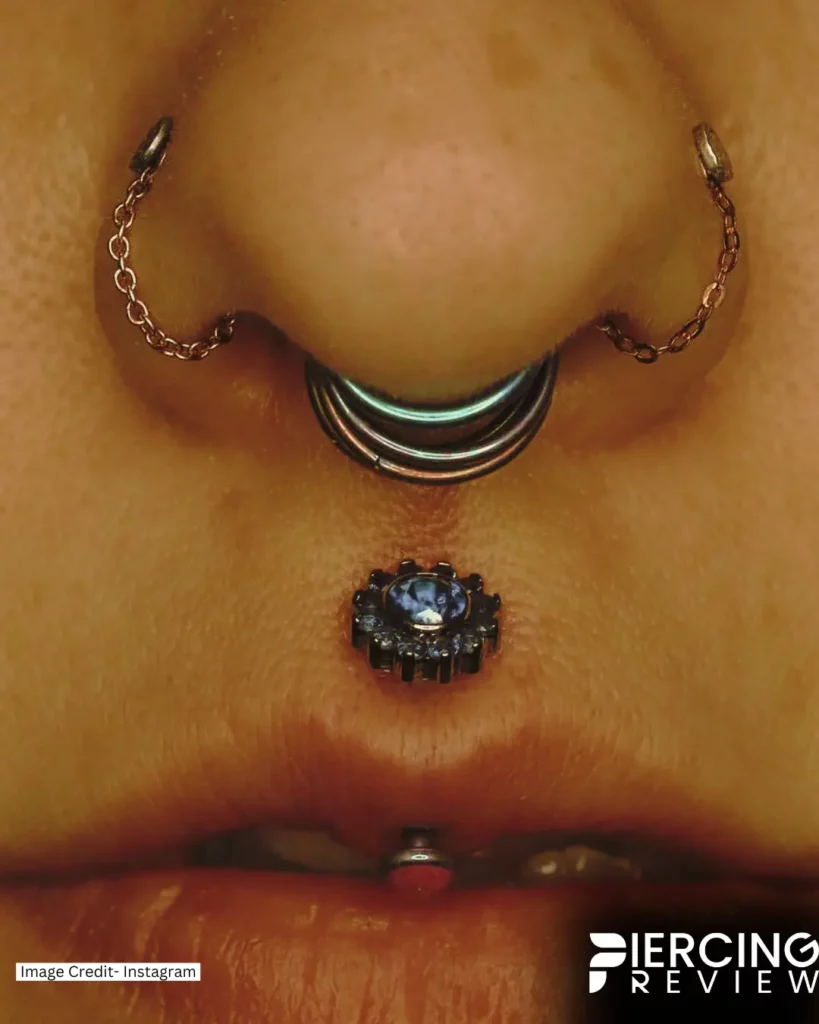
Double vertical philtrum piercings can add a bold statement to your look and can be placed symmetrically on either side of the center of the face. However, it’s important to note that this piercing can be more complex and may take longer to heal than a single philtrum piercing.
As always, it’s important to work with a reputable piercer and follow proper aftercare instructions to ensure the best possible outcome.

Pros:
- Can create a bold and unique statement on the face.
- Can be placed symmetrically to enhance facial symmetry.
- Adds dimension and interest to the face.
Cons:
- Can be more complex and take longer to heal than a single philtrum piercing.
- May be more prone to infection and other complications due to the proximity of the two piercings.
- Requires proper aftercare and regular cleaning to prevent infection and promote healing.
Have a Question, What Type of piercing should you avail?
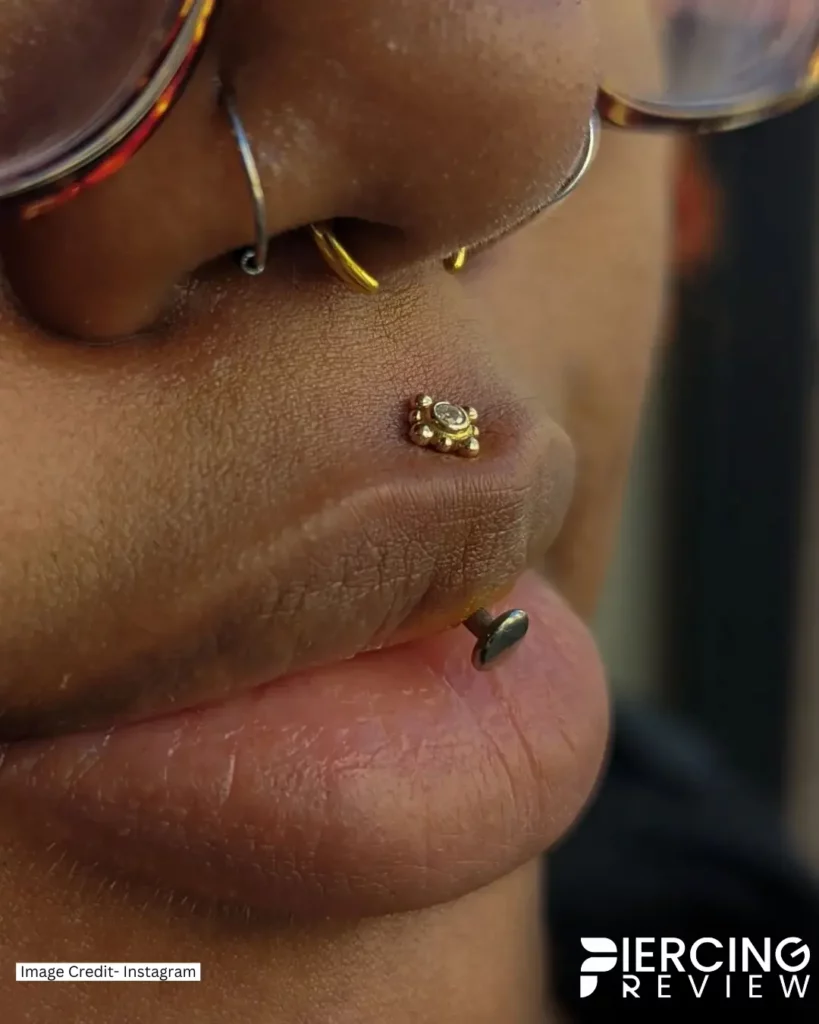
advantages:
- All three types of piercings can add a unique and striking element to one’s personal style.
- Each type of piercing offers its own distinct advantages, from creating a bold statement to enhancing facial symmetry.
Disadvantages:
- All types of piercings come with risks and potential complications, including pain, infection, and rejection.
- Multiple piercings or more complex piercings may require more time, effort, and expense to care for and maintain.
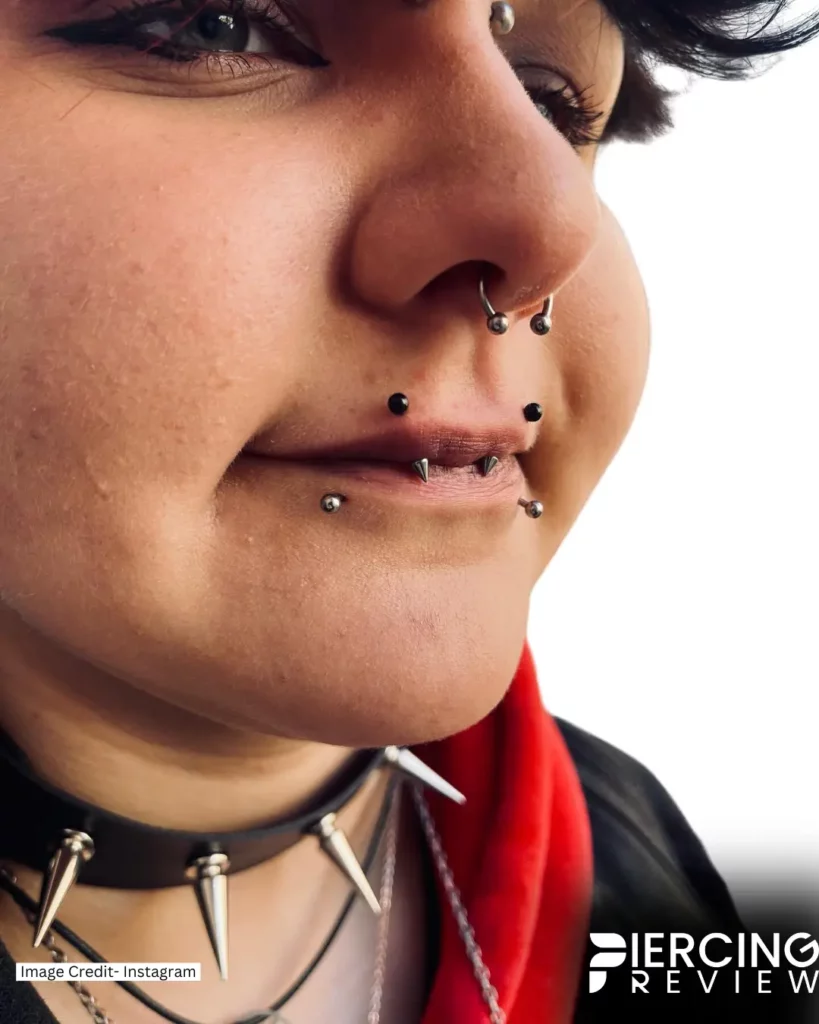
Key Features:
- The combination of piercings for the vertical labret, philtrum, and two lip piercings.
- The choice between vertical and horizontal placement for the philtrum piercing.
- The double vertical philtrum piercing with two separate piercings on the philtrum.
Take Care Problems:
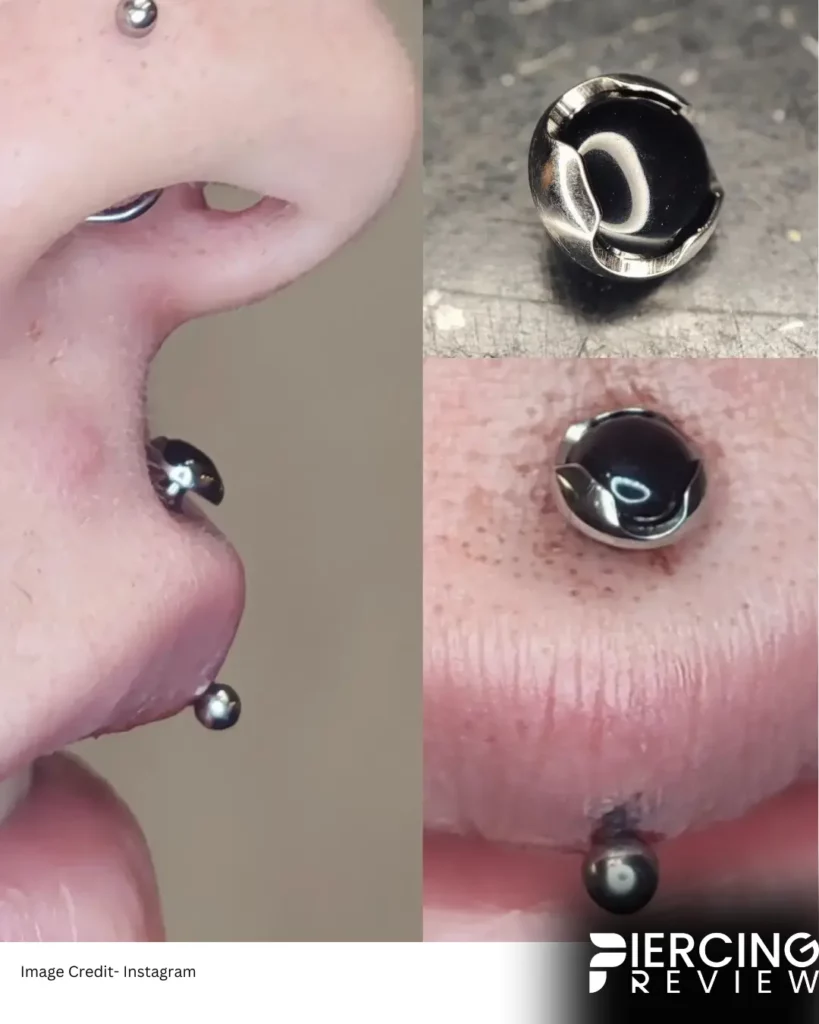
- All piercings require proper aftercare, including cleaning and monitoring for signs of infection or other complications.
- More complex or multiple piercings may require more time, effort, and attention to care for and maintain.
Overall Rating: out of 10.
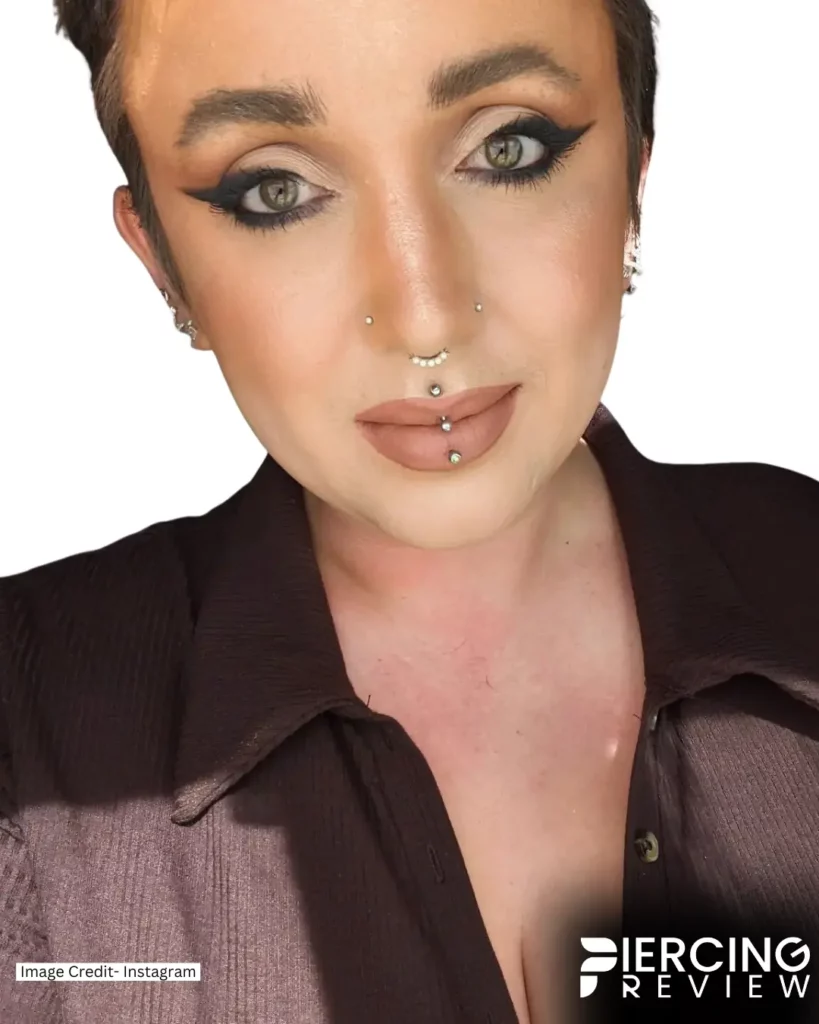
- The vertical labret, philtrum, and two lip piercings receive a rating of 7 for their unique and personalized look, but their potential for pain, expense, and aftercare requirements.
- The vertical versus horizontal philtrum piercing receives a rating of 8 for its striking and unique appearance, but its potential for migration, rejection, and need for proper aftercare.
- The double vertical philtrum piercing receives a rating of 6 for its bold statement, but its potential for complications is due to proximity and the need for proper aftercare.
Conclusion

In conclusion, Jestrum piercings are a unique and versatile option for those looking to make a statement with their body modification. With proper care and attention to aftercare, you can enjoy your new piercing with minimal complications. Always consult with a professional piercer before embarking on any body modification journey to ensure the best outcome possible.
Can I wear lipstick after my Jestrum piercing has healed?
Yes, once your Jestrum piercing is fully healed, you can wear lipstick. Apply it carefully around the piercing, avoiding the bottom bead, or clean the bead off after application. Liquid lipstick is often more forgiving with vertical lip piercings than other formulas.
Is a Jestrum piercing the same as a vertical labret?
No, a Jestrum piercing is different from a vertical labret. A Jestrum piercing goes through the upper lip’s cupid’s bow, while a vertical labret goes through the lower lip, entering below the lip and exiting at the top of the lip.
How long does it take for a Jestrum piercing to heal?
The healing process for a Jestrum piercing varies for each individual. Generally, it takes anywhere from 3 to 6 months for the piercing to heal fully.







